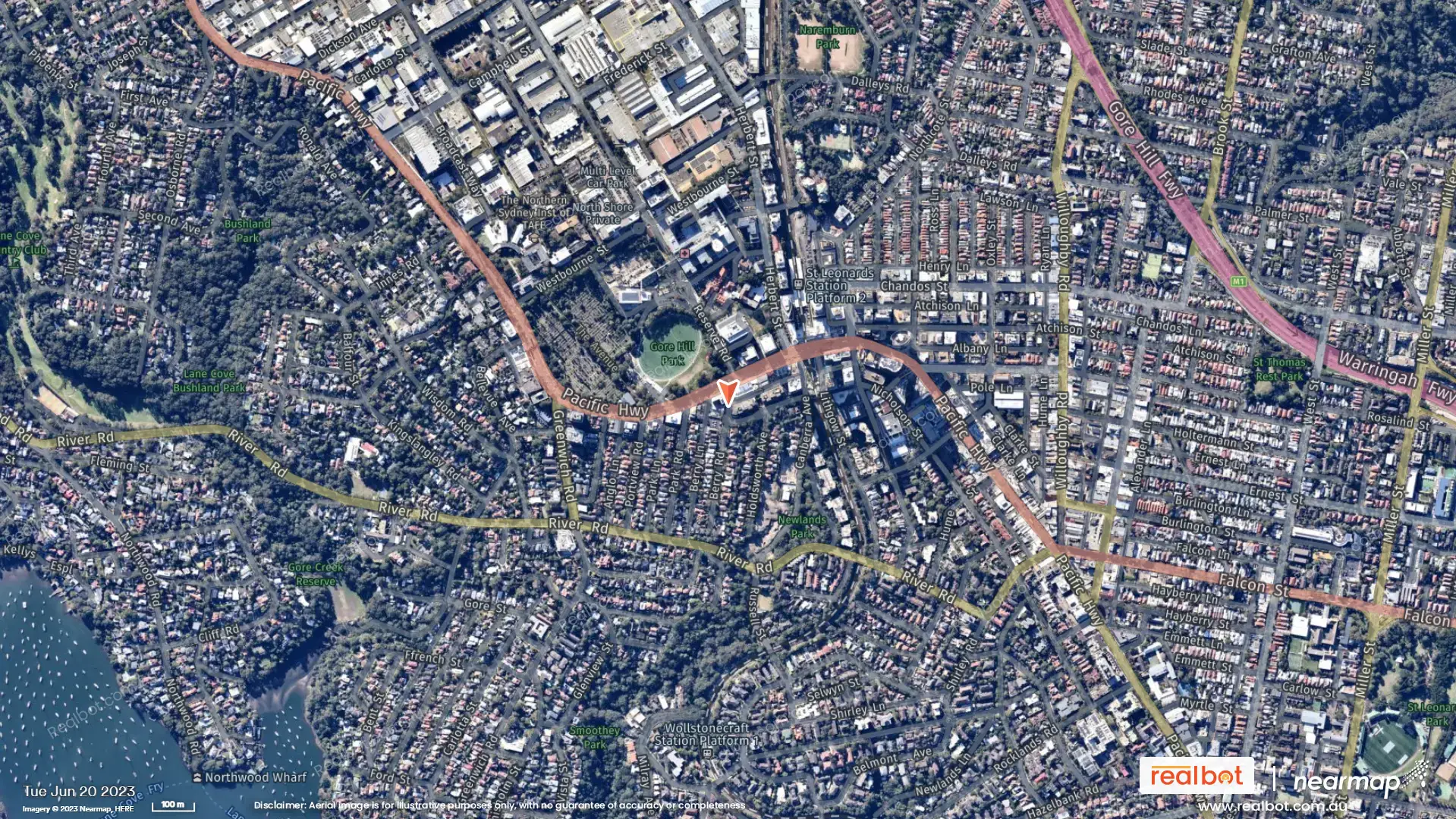
St Leonards, nestled in the heart of Sydney's Lower North Shore, has undergone a significant transformation between 2016 and 2024. Analyzing high-resolution aerial maps reveals a dynamic shift in the suburb's landscape, impacting residents, businesses, and potential investors alike. This analysis focuses on key changes, exploring the evolution of amenities and highlighting opportunities for buyers, sellers, and renters.
Historical Context: St Leonards boasts a rich history, initially known for its industrial past. The presence of factories and railway lines shaped its early development. However, in recent years, a pronounced shift towards residential and commercial redevelopment has been underway, transforming its character.
Significant Changes (2016-2024):
Comparing the aerial maps reveals several key changes:

Increased Density: The most striking transformation is the noticeable increase in building density, particularly around St Leonards Station. Numerous high-rise residential and commercial buildings have been constructed, significantly altering the skyline and increasing the overall population. This reflects the ongoing trend of inner-city densification in Sydney.
Residential Development Boom: The number of residential dwellings has markedly increased. Many older, low-rise buildings have been replaced by contemporary apartment complexes, catering to the growing demand for inner-city living. This is evident in several pockets, particularly along key arterial roads like River Road and Pacific Highway.
Improved Infrastructure: While not explicitly visible on aerial imagery, the upgrade and expansion of local infrastructure, including transportation and pedestrian pathways, is likely. The proximity to St Leonards Station and its transport links has been a major driver of the development boom.
Commercial Growth: The commercial landscape has also evolved. While some industrial areas remain, many have been repurposed or replaced with modern office buildings, contributing to the increased daytime population and vibrancy of the area. This suggests a strong focus on attracting businesses and creating a mixed-use environment.
Green Spaces: While development has intensified, the presence of existing parks like Gore Hill Park appears relatively unchanged, indicating a focus on retaining green spaces despite the growth in built-up areas.
Development of Amenities:
The increase in residential and commercial properties strongly suggests a corresponding improvement in amenities. While the aerial maps don't show specifics, it's highly probable that the following have increased:
Retail and Dining: The influx of residents and workers has likely spurred the development of new cafes, restaurants, and retail spaces, enhancing the convenience and lifestyle appeal of the suburb.
Community Facilities: Increased population density usually means greater demand for community facilities such as libraries, childcare centers, and recreational areas. Further research into council records would be needed to confirm the development of such facilities.
Opportunities for Buyers, Sellers, Renters, and Investors:
Buyers: The increased density provides a greater variety of properties, ranging from apartments to townhouses, potentially offering a wider choice at various price points. However, competition is likely high due to the desirability of the location.
Sellers: Property values in St Leonards are likely to have appreciated significantly due to the increased demand, presenting attractive opportunities for sellers.
Renters: The availability of newer apartments may offer updated amenities and conveniences, though rental prices are likely to reflect the high demand.
Investors: St Leonards represents a potentially lucrative investment opportunity due to its prime location, proximity to transport, and ongoing development. However, thorough market research is essential to understand potential risks and returns.
Key Developments and Amenities:
(Here you would incorporate details about recent developments from official sources like council reports, government announcements, or news articles):
Transport: St Leonards boasts excellent public transport links, with the St Leonards train station providing easy access to the city and beyond. (planned transport upgrades or improvements from official sources).
Shopping and Dining: The suburb features a diverse array of restaurants, cafes, and shops, catering to various tastes and needs. (new developments in the retail sector, based on your research).
Parks and Recreation: Several parks and reserves offer green spaces for relaxation and recreation, enhancing the quality of life for residents. (Gore Hill Park and other parks visible on the map).
Education: St Leonards offers access to both public and private schools, catering to different educational preferences.
Healthcare: Convenient access to nearby medical facilities provides residents with peace of mind.
Investment Perspective:
(This section would discuss the investment potential based on market trends and official data):
St Leonards' strategic location and ongoing development make it a promising investment prospect. The strong rental market, coupled with the ongoing growth in infrastructure and amenities, suggests a positive outlook for property values.
Council and Government Initiatives:
initiatives impacting the area, such as urban renewal projects, infrastructure upgrades, or environmental conservation plans. These announcements, from trusted sources like the local council website and government property sites, will substantiate claims about the future prospects of the area.
St Leonards offers a compelling mix of urban convenience and residential tranquility, making it an appealing choice for a wide range of individuals and families. The ongoing developments and improvements in the area solidify its position as a sought-after location in Sydney's Lower North Shore, providing excellent opportunities for both residents and investors.
